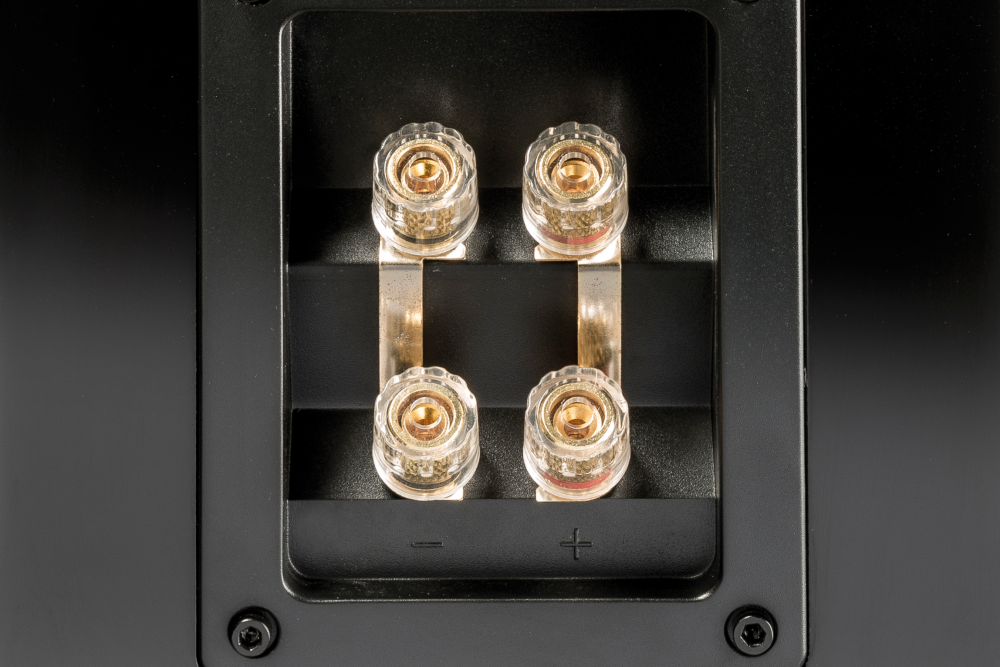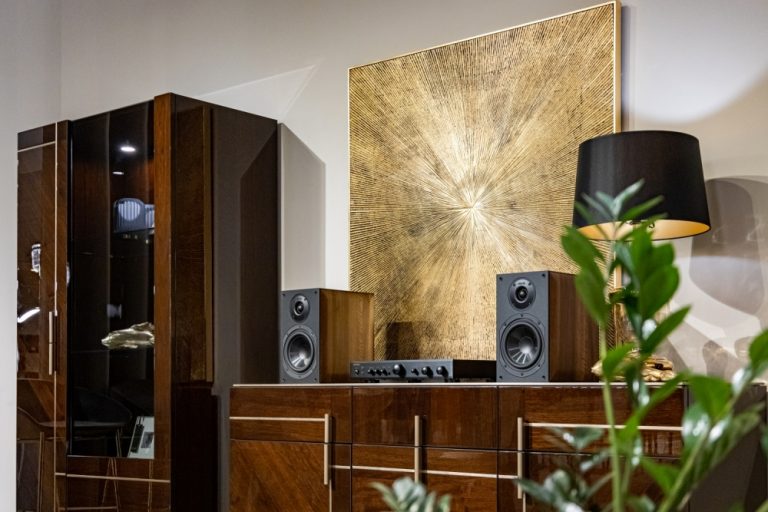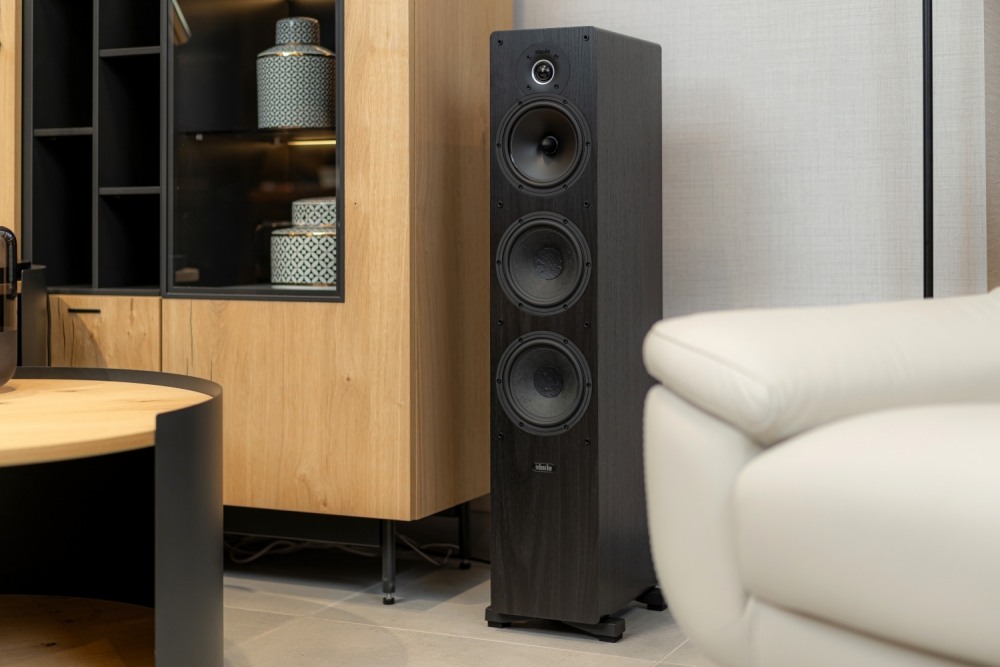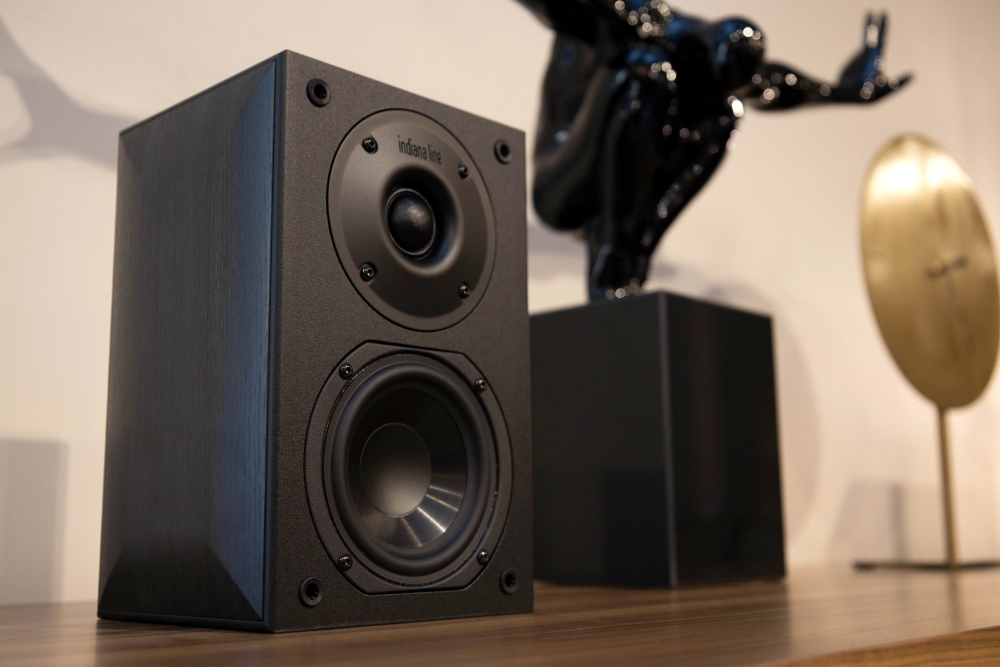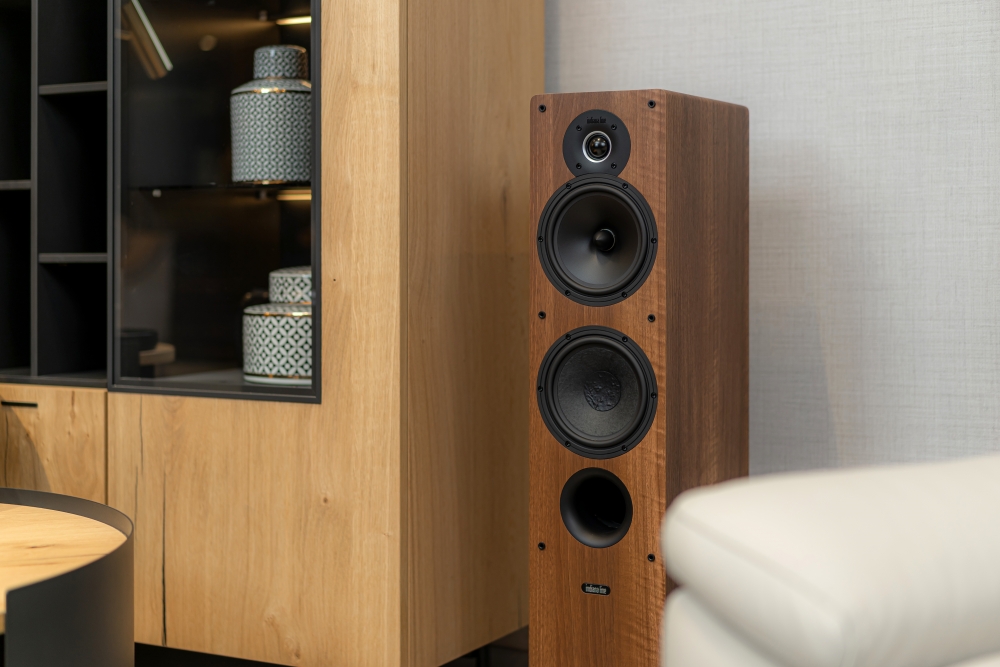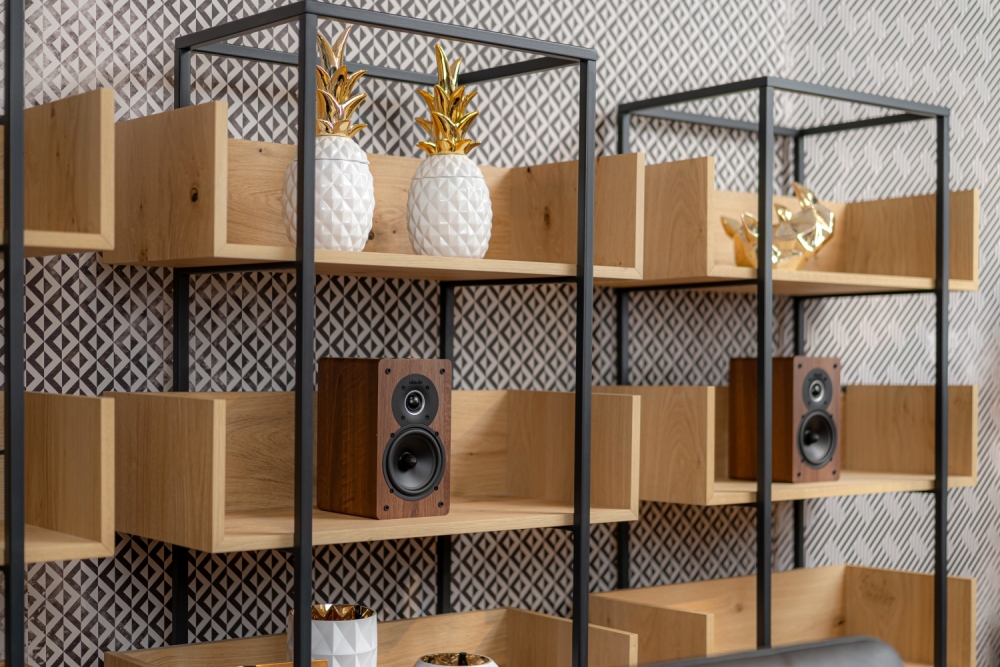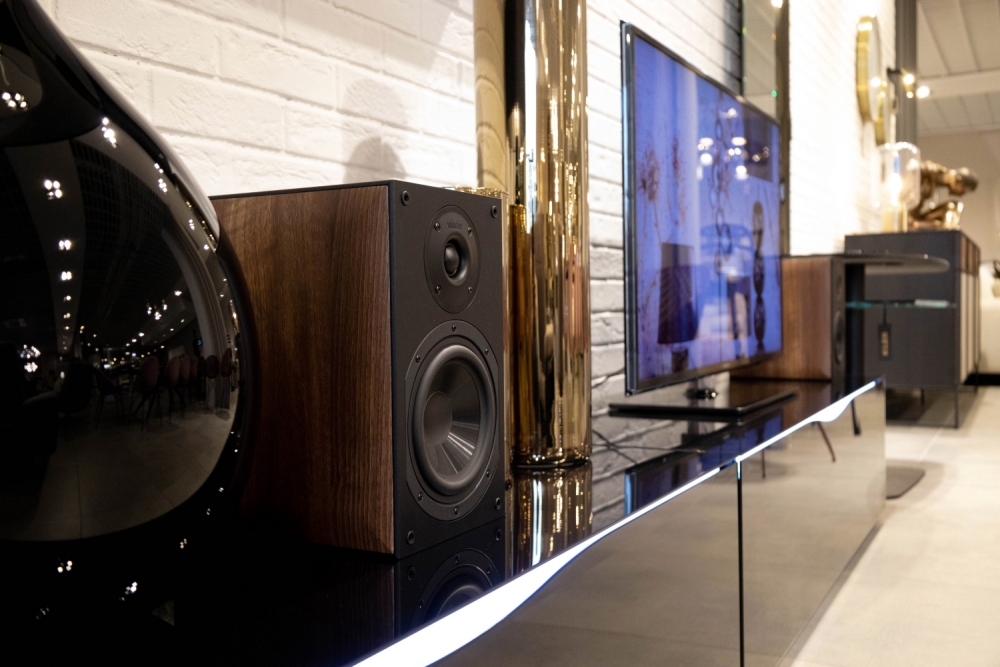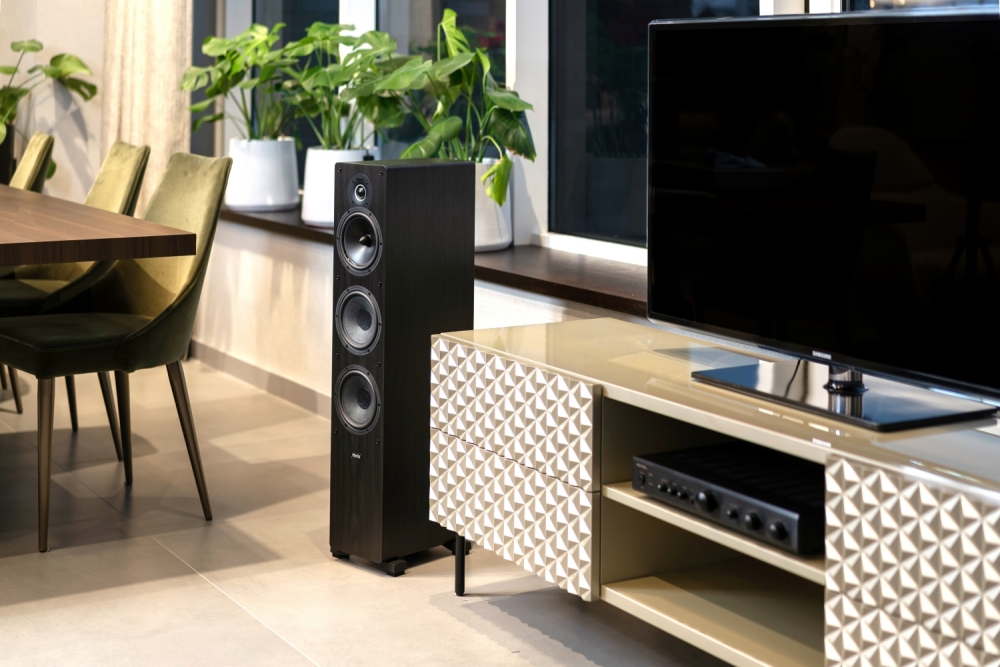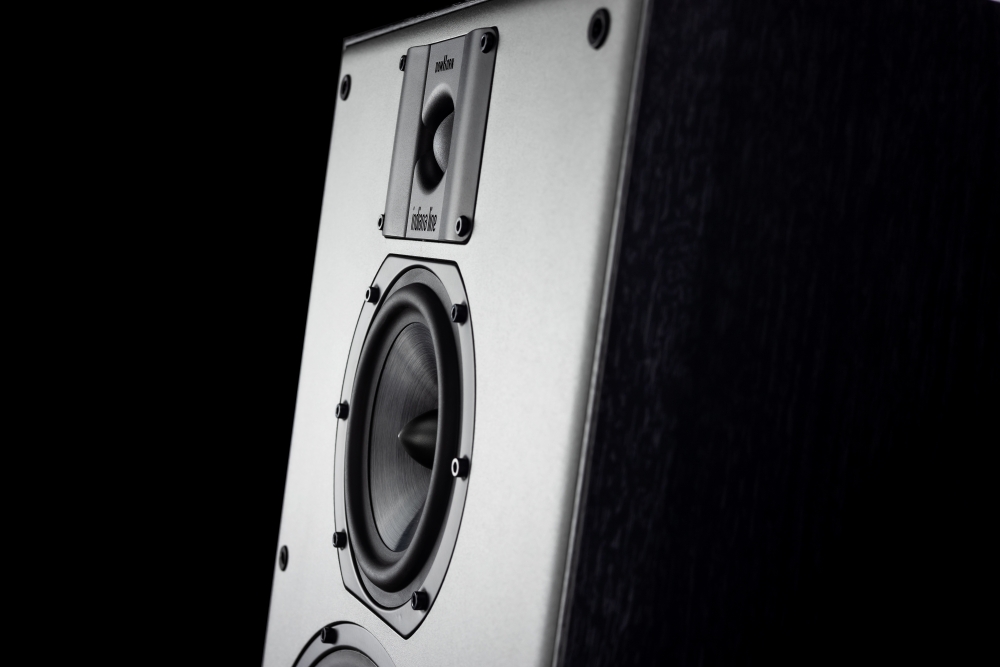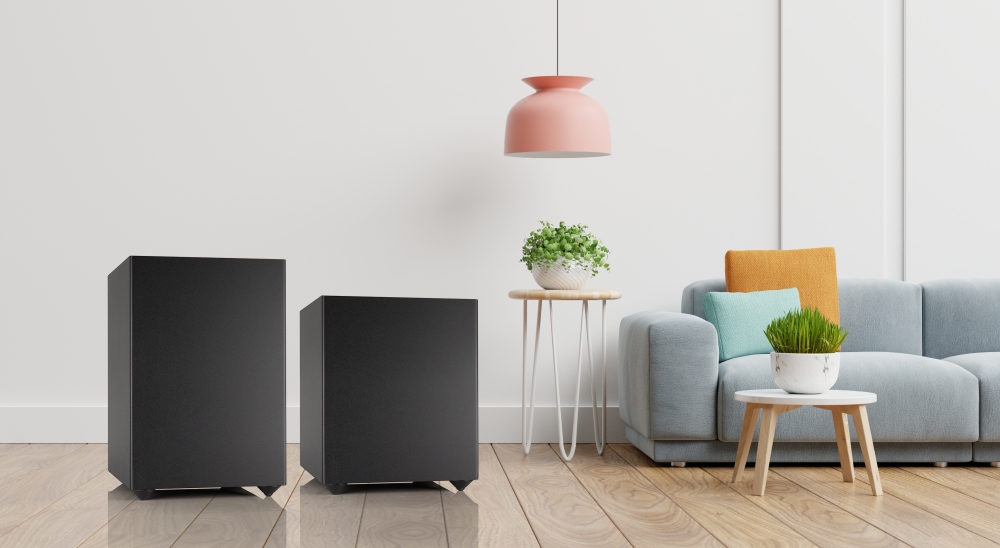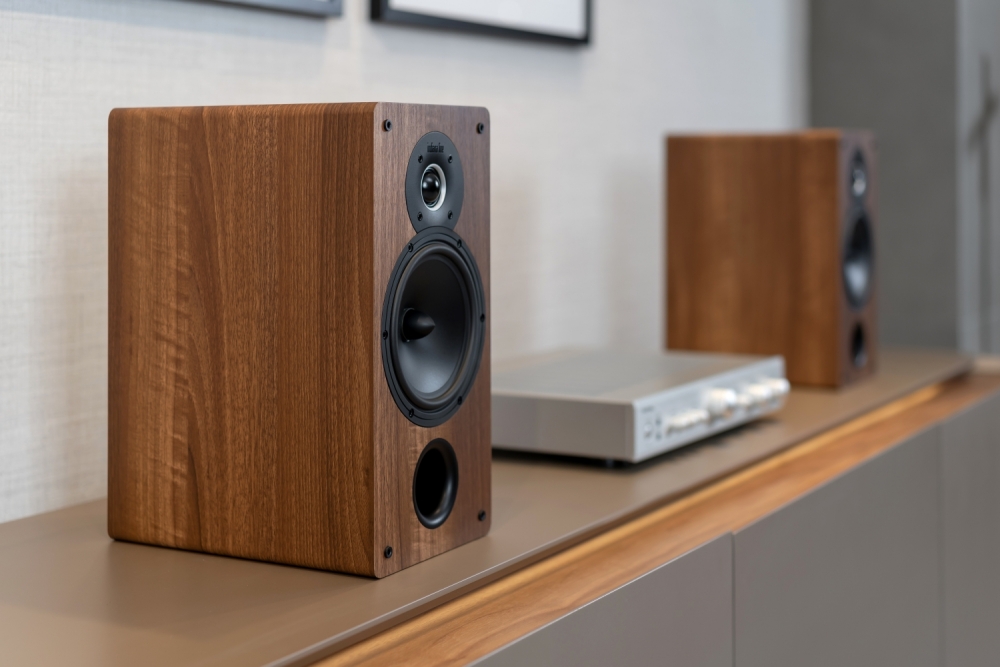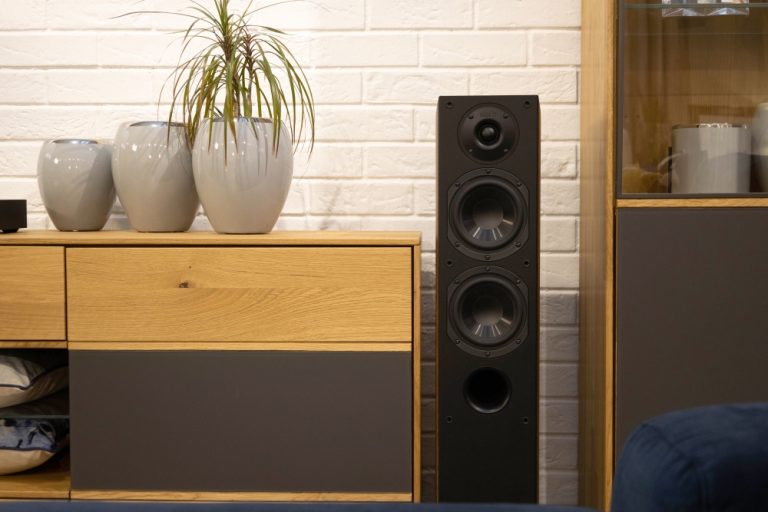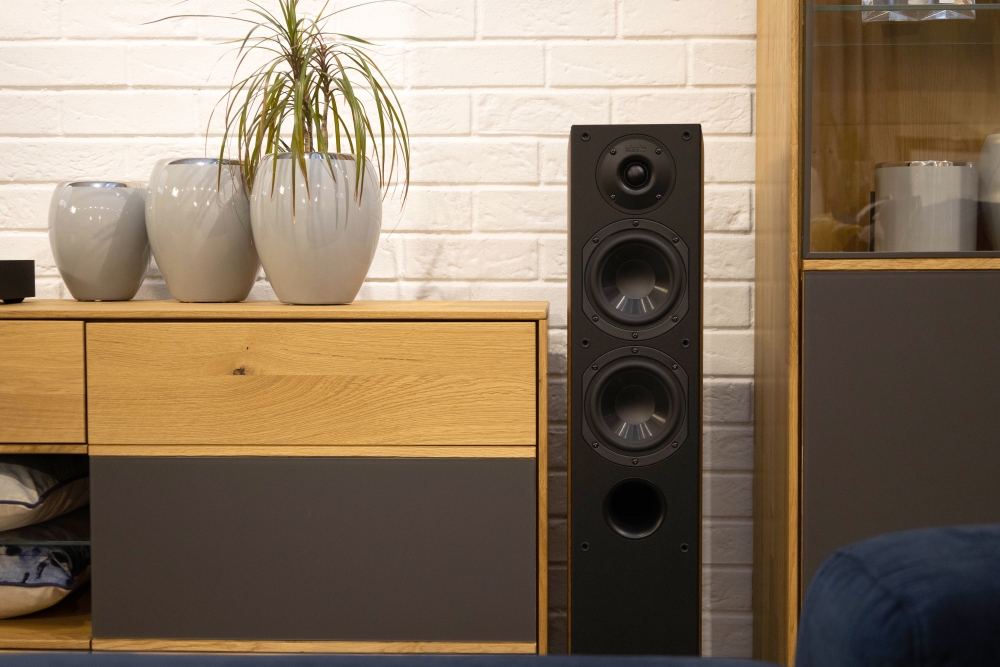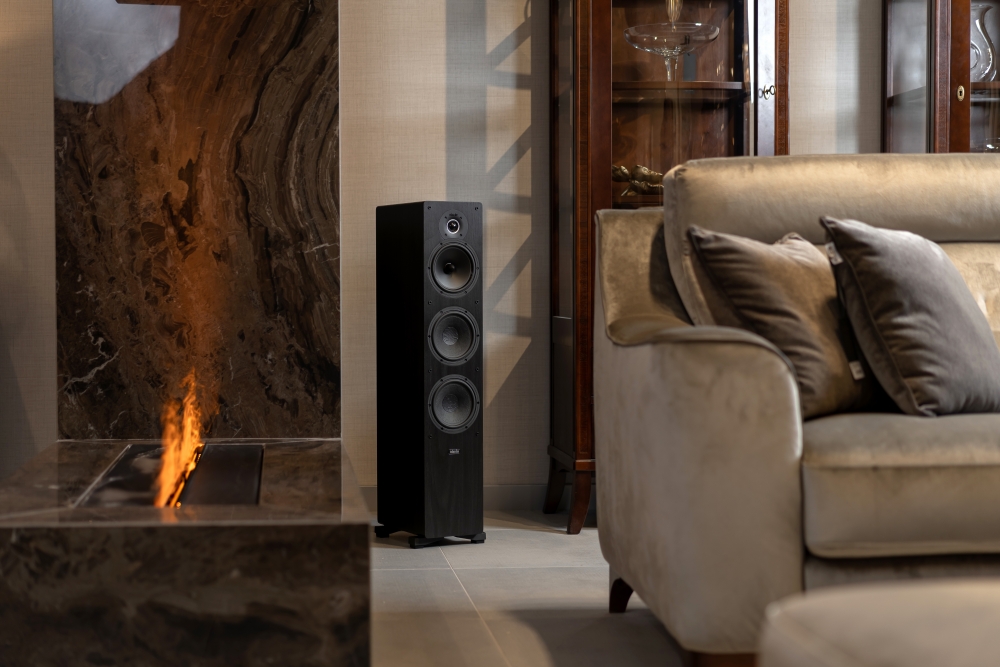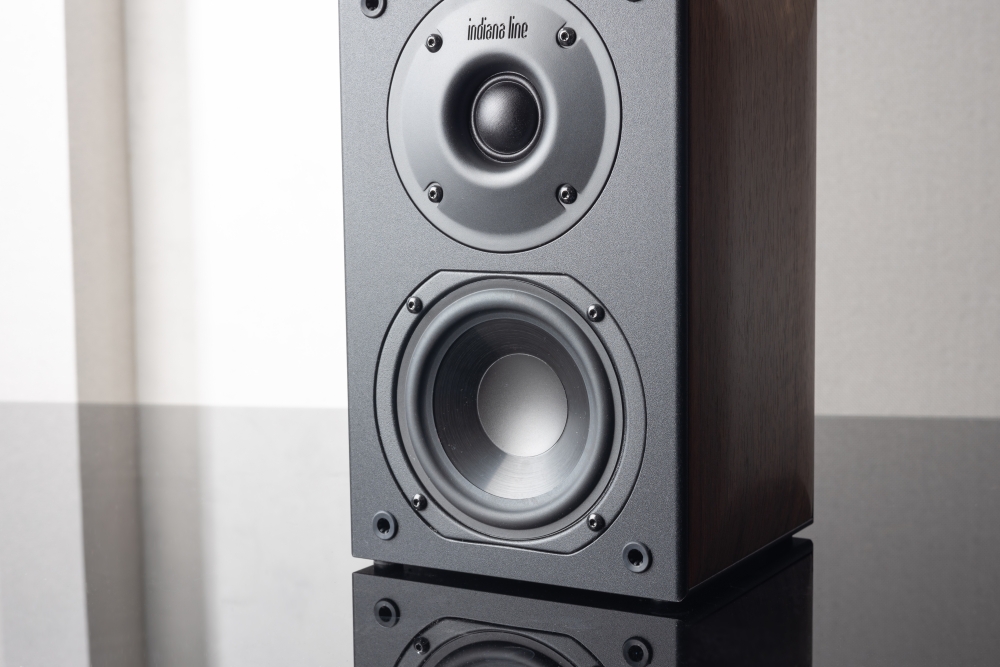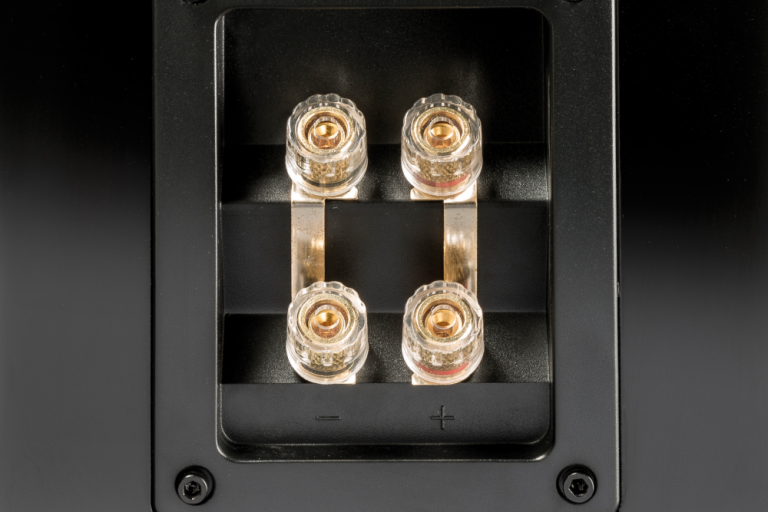
Many audio users are looking for ways to improve the sound quality of their audio system. There are many possibilities. It is worth remembering that there are also simple solutions that will not consume a large budget. The owners of selected Indiana Line floorstanding models should definitely consider the use of bi-wiring, as the manufacturer has predicted such a possibility. What is this solution and what are the benefits? We will explain all the issues in this article.
Contents: Bi-wiring – is it worth it?
- What is bi-wiring?
- Is it worth using bi-wiring?
- Bi-wiring vs bi-amping
- Bi-wiring cables
- How to connect the cables?
- Bi-wiring – opinions
- Summary
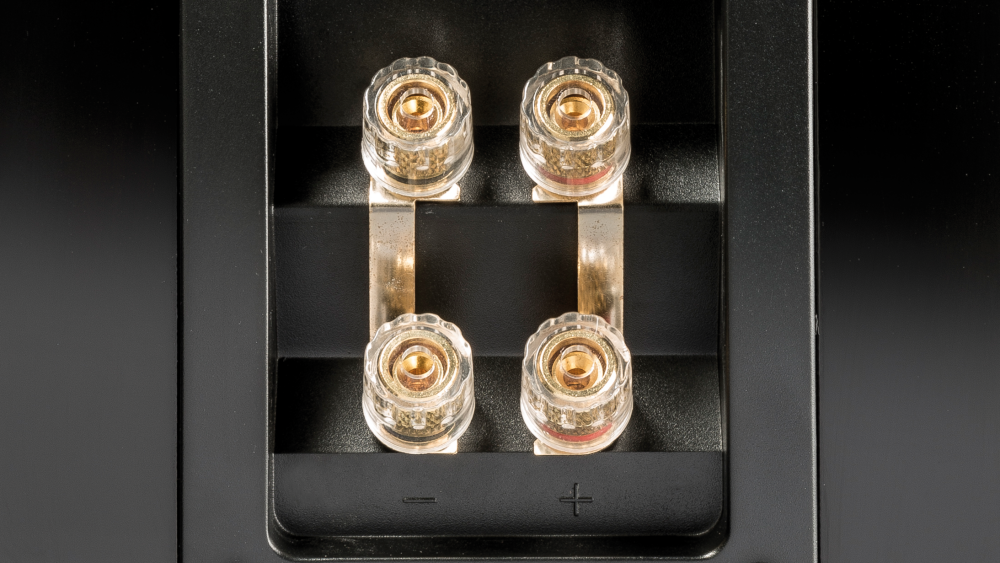
What is bi-wiring?
To explain the essence of bi-spinning, it is necessary to briefly recall the method of connecting speakers to one amplifier or receiver. The basic way is to connect a single pair of speaker cables to the amplifier terminals. On the other hand, the cables are connected to the terminals on the back of the loudspeakers. The advantage of this basic speaker connection is, of course, its simplicity. You only need basic speaker cables. However, if we look at this connection from the technical side, it turns out that the signal from the amplifier is transmitted via the same cable (on a single cable) to individual drivers. This means that both the power-demanding woofer and the small tweeter are powered in the same way.
Some manufacturers offer double speaker terminals in the loudspeakers. Such a solution can be found, among others, in Indiana Line floostanding models from the Tesi and Nota series.
Novice users often wonder what the bi-wire connection is about, what is the purpose of it. It is just about the possibility of separating the signal flowing to the loudspeakers processing individual parts of the band.
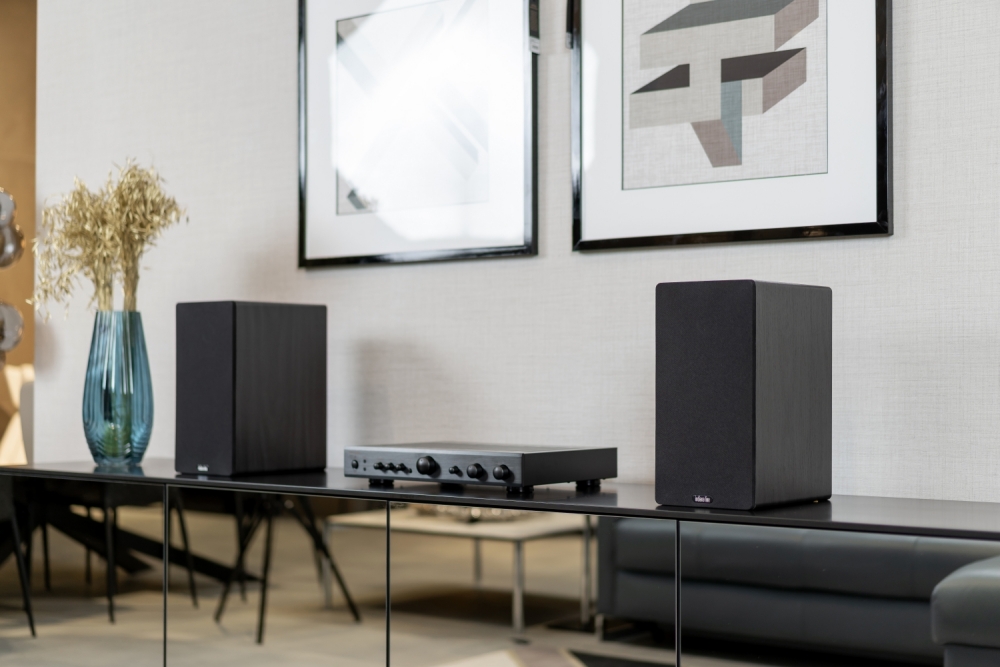
Is it worth using bi-wiring?
Many users are curious if bi-wiring makes sense. To answer this question, it’s important to know how speaker cable affects sound quality. However, do not be afraid of the physical formulas. We will explain it in a much simpler way.
In loudspeakers with single loudspeaker sockets, the electric signal is sent to the crossover, and only there the band is distributed to the individual speakers. Users of such constructions cannot take advantage of bi-spinning. Of course, we ignore amateur modifications that result in the loss of warranty.
So let’s focus on loudspeakers with double speaker connectors, which the manufacturer has adapted to bi-wiring at the factory. A different crossover design is used in these models. In the loudspeakers using the parallel crossover, each loudspeaker is equipped with separate filters. Their task is to remove any unwanted components in the audio signal.
When reproducing low frequencies, a large current pulse is generated, which may also affect other frequencies. Therefore, the main advantage of a bi-wire connection is the separation of the low and high frequency signal.
Users of systems that have dual speaker inputs at the back of the speakers should also be aware of the way the signal travels before it goes to the drivers. Well, when using individual speaker cables, the signal from the amplifier is sent to the tweeters through a speaker jumper, which in most loudspeakers is not of the best quality, so the signal is distorted before it goes to the tweeters. Of course, there are loudspeakers factory-equipped with good-quality jumpers, but we must admit that this is not a common situation and concerns mainly hi-end loudspeakers.
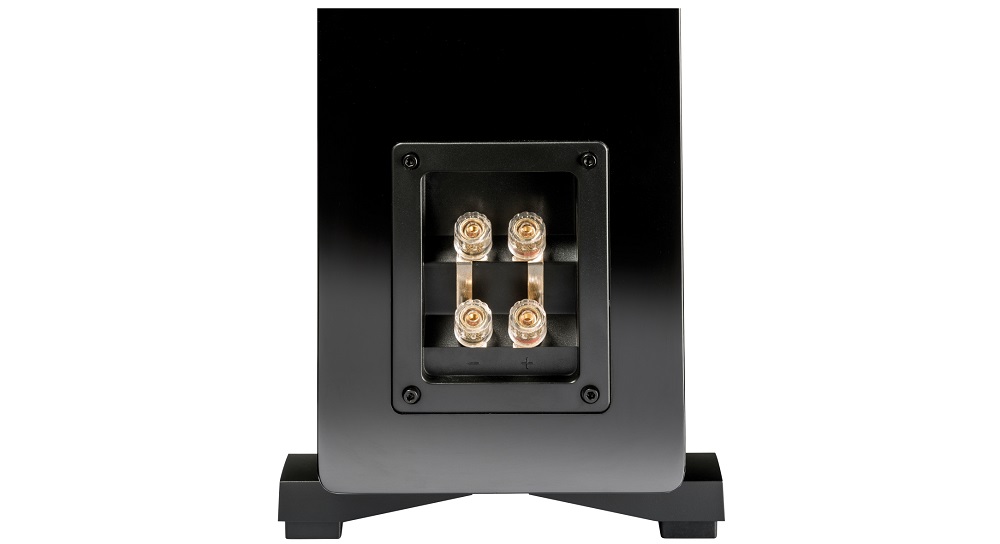
This means that by connecting loudspeakers adapted by the manufacturer for bi-wiring (e.g. Indiana Line models from the Diva series, except for the Diva 752 model) with classic speaker cables with a single pair of plugs, you will not fully use the sound potential of the loudspeakers. In the Indiana Line models, the manufacturer, however, took care of the appropriate construction of the loudspeaker terminals. This component, despite its inconspicuous appearance, is entirely made of a non-magnetic conductor.
In addition, splitting the signal of the woofer or mid-woofer section, which absorbs a lot of power from the noise-sensitive tweeter, improves signal separation. It is hardly necessary to convince anyone how distortion of the tweeter can negatively affect the sound quality.
The use of a bi-wire connection allows for better separation of the signal flowing to the speakers responsible for processing individual parts of the band. The loudspeakers of the woofer and tweeter sections have different characteristics and different requirements in terms of signal strength. With a single cable, the signal flowing to the woofer affects the other bands.
The use of bi-spinning generally improves bass. The detail and differentiation of bass are upgraded. We know from the opinions of the Indiana Line Tesi 661 users that they notice greater transparency and clarity of the treble. Bi-wiring also boosts the precision of stereo. In speakers with high potential, the bi-wire connection improves the localization of the virtual sources. Especially lovers of instrumental music will feel it, or actually hear it.
The scale of improvement of individual factors depends of course on many aspects and differs depending on the system and its individual components. The easiest way to see how bi-wire will affect your speakers is to test it. It is worth remembering that this is one of the cheapest ways to improve the sound quality in an audio system.
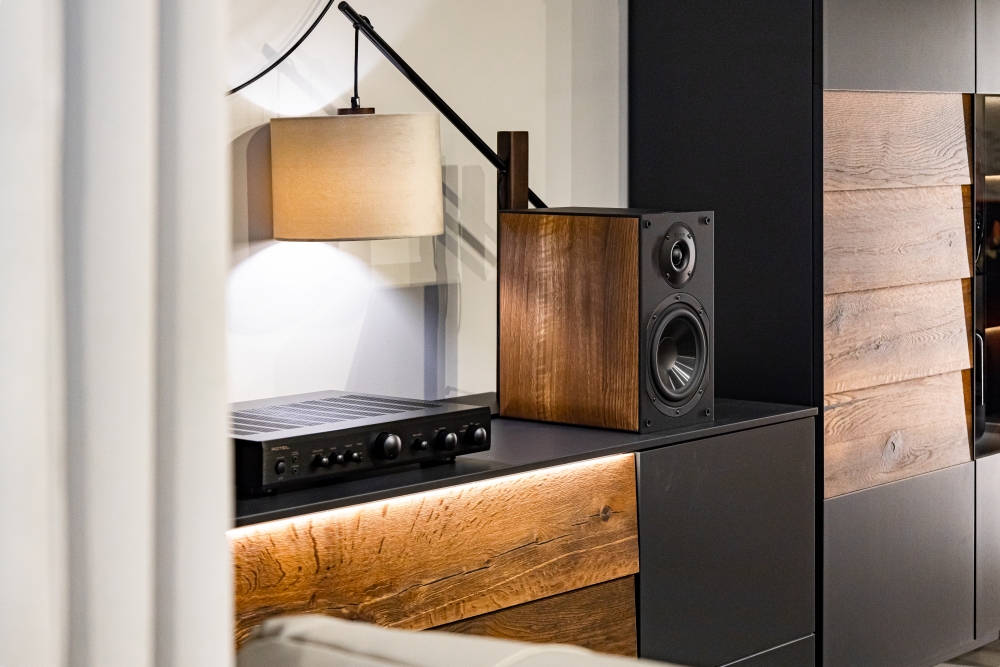
Bi-wiring vs bi-amping
It is worth knowing that there is also a bi-amp connection (bi-amping), which allows for even better separation and differentiation of the signal. Its essence lies in the use of two amplifiers that will power the loudspeakers (e.g. the Indiana Line Tesi 561 model). This means that in a given speaker, the low-frequency or mid-woofer and tweeter sections are powered from other amplifiers, the sound characteristics of which can be consciously selected in terms of your preferences and the properties of the selected range of the acoustic band.
The advantage of this solution is the complete separation of the individual parts of the amplified signal. The two-cable connection means that the signal from the woofer and tweeter sections is amplified by two independent amplifiers. Thanks to this, we obtain a good separation of the woofer, which draws a lot of power from the amplifier. When connected in this way, it has no effect on the tweeter, because it is powered from a separate device. This allows for greater sonic clarity and increases the precision and momentum of bass. Thanks to this connection, the power amplifiers are less loaded. They only amplify a given part of the human audible range.
It is worth remembering that to create bi-amping you will need two stereo amplifiers. Due to the cost, this solution is rarely used in home audio systems. However, it has the advantages coming from the possibilities of shaping the sound by simultaneously using devices with diametrically different characteristics (eg using a tube amplifier to power the “treble” and a powerful transistor to drive the bass).
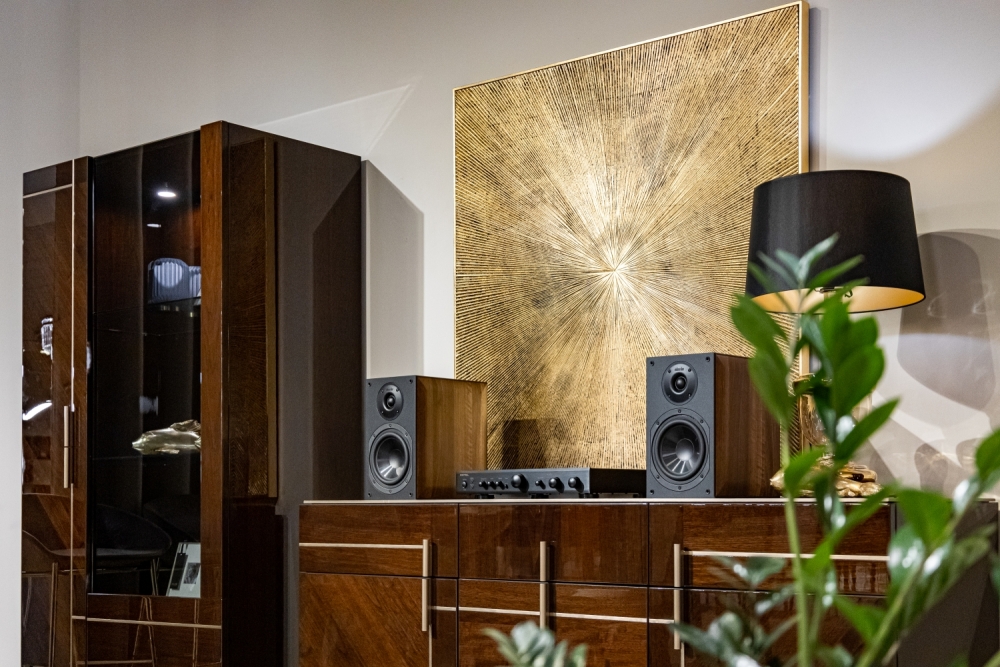
Bi-wiring cables
When choosing speaker cables for bi-spinning, it is worth following the same principles as for classic speaker cables.
First, pay attention to the quality of the conductor. Silver has the best signal conductivity. However, due to the very high price, such bi-wiring cables are chosen by only a few users. The most popular are cables in which the conductor is OFC oxygen-free copper. They will be a good choice not only for budget audio sets. They also work well in higher class systems.
It is also worth paying attention to the quality of the plugs. They should be solidly made. This will ensure the durability of the wiring. This is because speaker cables should serve the user for years.
When choosing speaker cables, remember not to make unnecessary supply when choosing the cable length.
How to connect the cables?
So it’s time to explain how to properly connect bi-wiring cables. At the beginning, you should equip yourself with the appropriate speaker cables that are designed for this purpose. They have double plugs on the side of the loudspeakers. Hence the name – bi-wiring. The first thing you should do before connecting these cables is to remove the jumpers connecting the speaker terminals. This is a very important step to ensure that the electrical signal does not pass from a single cable to the tweeter, as has been the case so far. Now you only need to connect the duplicate speaker plugs to the amplifier terminals and in the loudspeakers.
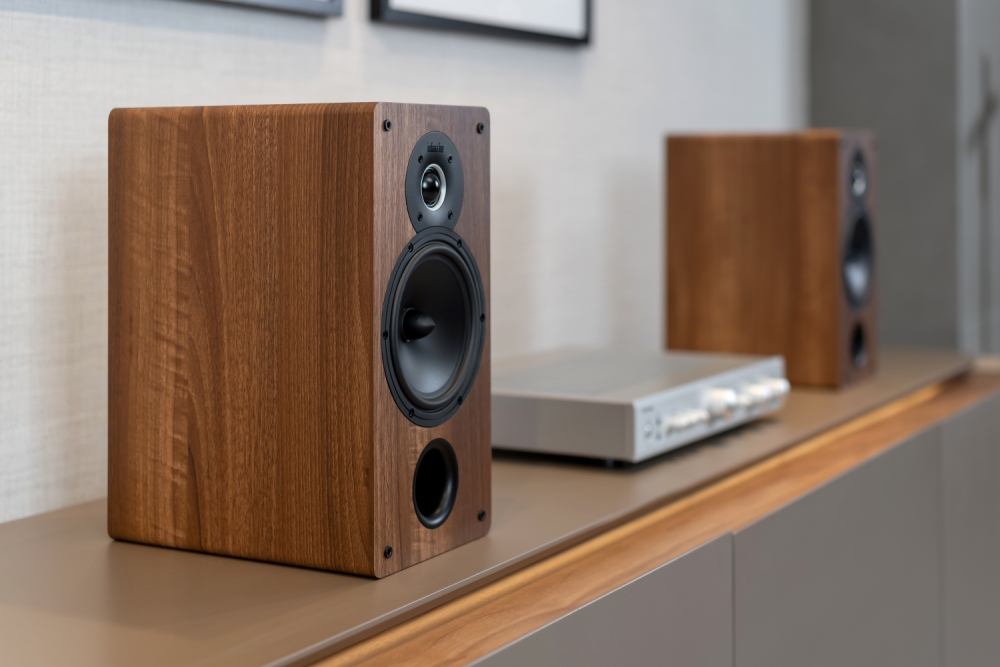
Bi-wiring – opinions
The subject of wiring always causes a lot of emotion in discussions among lovers of good sound. It is similar in the case of bi-wiring (two-cable connection). Many users wonder if bi-wiring makes sense.
We know from user feedback that many of them hear the difference when bi-amping is applied to their audio system. Most often, positive feedback relates to the improved stereophony and better control. We also find the opinions that bi-wiring has not affected the sound quality in any way.
Users also point out that the quality of the cables used has a great influence on the result. The better bi-wiring speaker cable you connect to the equipment, the better results you can expect.
It is worth remembering that the largest current pulse is generated when reproducing low frequencies. Therefore, the use of bi-wiring may be more audible when playing electronic and rock music than, for example, when listening quietly to jazz or instrumental music.
However, we suggest not to be uncritical about the opinions appearing on internet forums. A much better solution is to check how bi-wiring will affect the sound quality of your audio system. We can use different cables and compare their impact on sound quality. It is worth remembering that the result depends not only on the system, but also on the user’s hearing sensitivity to changes. Therefore, the effects may be different from the opinions you can read about bi-wiring on the Internet.
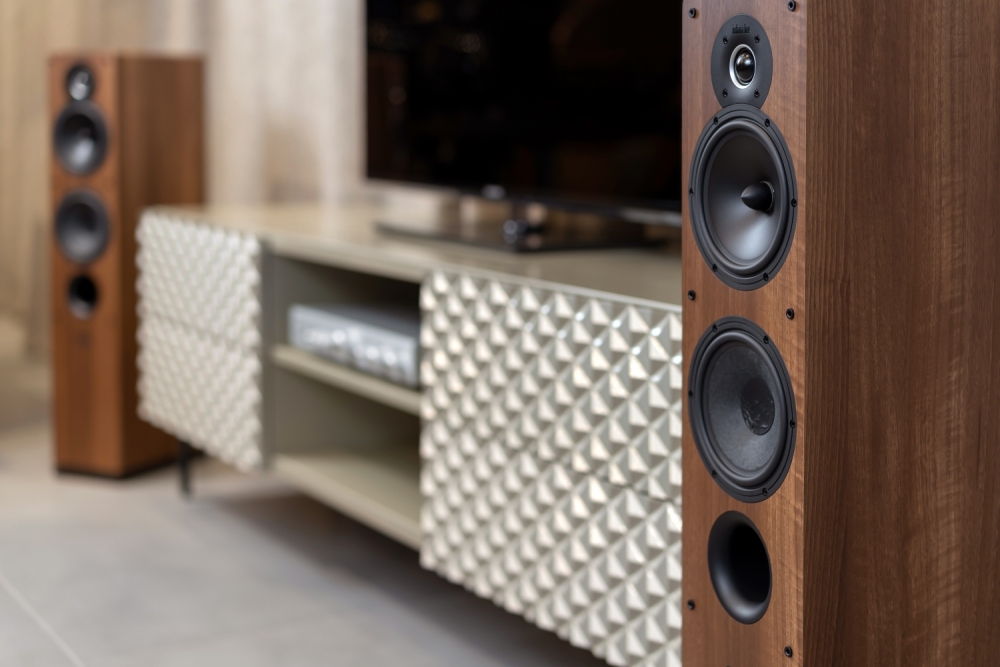
Summary
Bi-wiring cables are not much more expensive than classic models with single plugs. So if your Indiana Line loudspeaker model is equipped with double speaker clamps, in our opinion it is worth paying the expense. Especially people who already know their own loudspeakers well will have the opportunity to check how the use of bi-wiring will affect the bass and other aspects of the sound.
Remember that if you find that bi-wiring is what you are looking for, you can delve even more into improving the sound quality. The next step then will be to implement bi-amping in your system.
If, on the other hand, you do not hear any differences in sound quality resulting from the use of bi-wiring, you can always go back to the original way of connecting the speakers with one cable.
